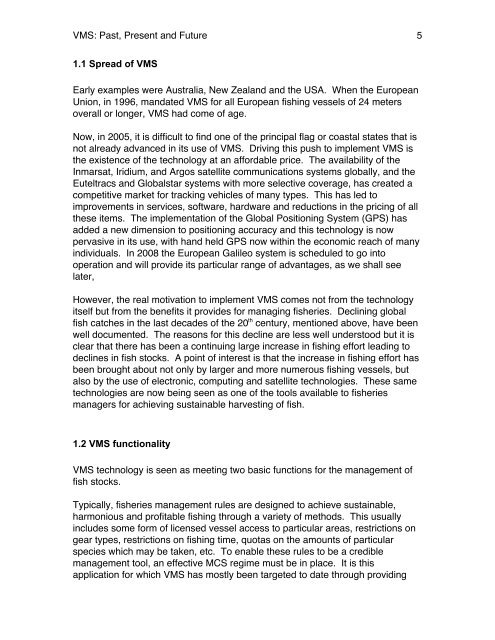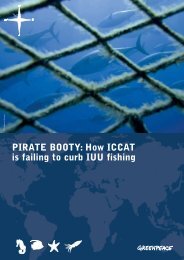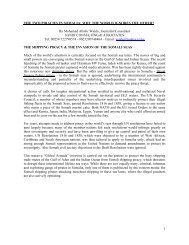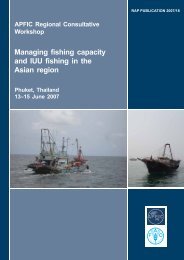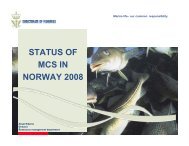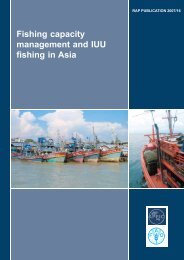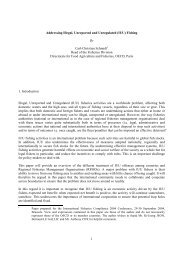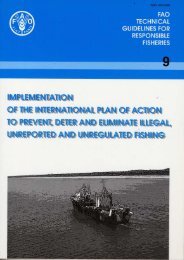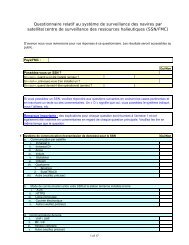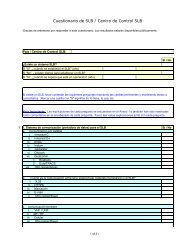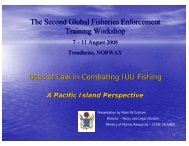Fishing Vessel Monitoring Systems: Past, Present and Future
Fishing Vessel Monitoring Systems: Past, Present and Future
Fishing Vessel Monitoring Systems: Past, Present and Future
You also want an ePaper? Increase the reach of your titles
YUMPU automatically turns print PDFs into web optimized ePapers that Google loves.
VMS: <strong>Past</strong>, <strong>Present</strong> <strong>and</strong> <strong>Future</strong> 5<br />
1.1 Spread of VMS<br />
Early examples were Australia, New Zeal<strong>and</strong> <strong>and</strong> the USA. When the European<br />
Union, in 1996, m<strong>and</strong>ated VMS for all European fishing vessels of 24 meters<br />
overall or longer, VMS had come of age.<br />
Now, in 2005, it is difficult to find one of the principal flag or coastal states that is<br />
not already advanced in its use of VMS. Driving this push to implement VMS is<br />
the existence of the technology at an affordable price. The availability of the<br />
Inmarsat, Iridium, <strong>and</strong> Argos satellite communications systems globally, <strong>and</strong> the<br />
Euteltracs <strong>and</strong> Globalstar systems with more selective coverage, has created a<br />
competitive market for tracking vehicles of many types. This has led to<br />
improvements in services, software, hardware <strong>and</strong> reductions in the pricing of all<br />
these items. The implementation of the Global Positioning System (GPS) has<br />
added a new dimension to positioning accuracy <strong>and</strong> this technology is now<br />
pervasive in its use, with h<strong>and</strong> held GPS now within the economic reach of many<br />
individuals. In 2008 the European Galileo system is scheduled to go into<br />
operation <strong>and</strong> will provide its particular range of advantages, as we shall see<br />
later,<br />
However, the real motivation to implement VMS comes not from the technology<br />
itself but from the benefits it provides for managing fisheries. Declining global<br />
fish catches in the last decades of the 20 th century, mentioned above, have been<br />
well documented. The reasons for this decline are less well understood but it is<br />
clear that there has been a continuing large increase in fishing effort leading to<br />
declines in fish stocks. A point of interest is that the increase in fishing effort has<br />
been brought about not only by larger <strong>and</strong> more numerous fishing vessels, but<br />
also by the use of electronic, computing <strong>and</strong> satellite technologies. These same<br />
technologies are now being seen as one of the tools available to fisheries<br />
managers for achieving sustainable harvesting of fish.<br />
1.2 VMS functionality<br />
VMS technology is seen as meeting two basic functions for the management of<br />
fish stocks.<br />
Typically, fisheries management rules are designed to achieve sustainable,<br />
harmonious <strong>and</strong> profitable fishing through a variety of methods. This usually<br />
includes some form of licensed vessel access to particular areas, restrictions on<br />
gear types, restrictions on fishing time, quotas on the amounts of particular<br />
species which may be taken, etc. To enable these rules to be a credible<br />
management tool, an effective MCS regime must be in place. It is this<br />
application for which VMS has mostly been targeted to date through providing


